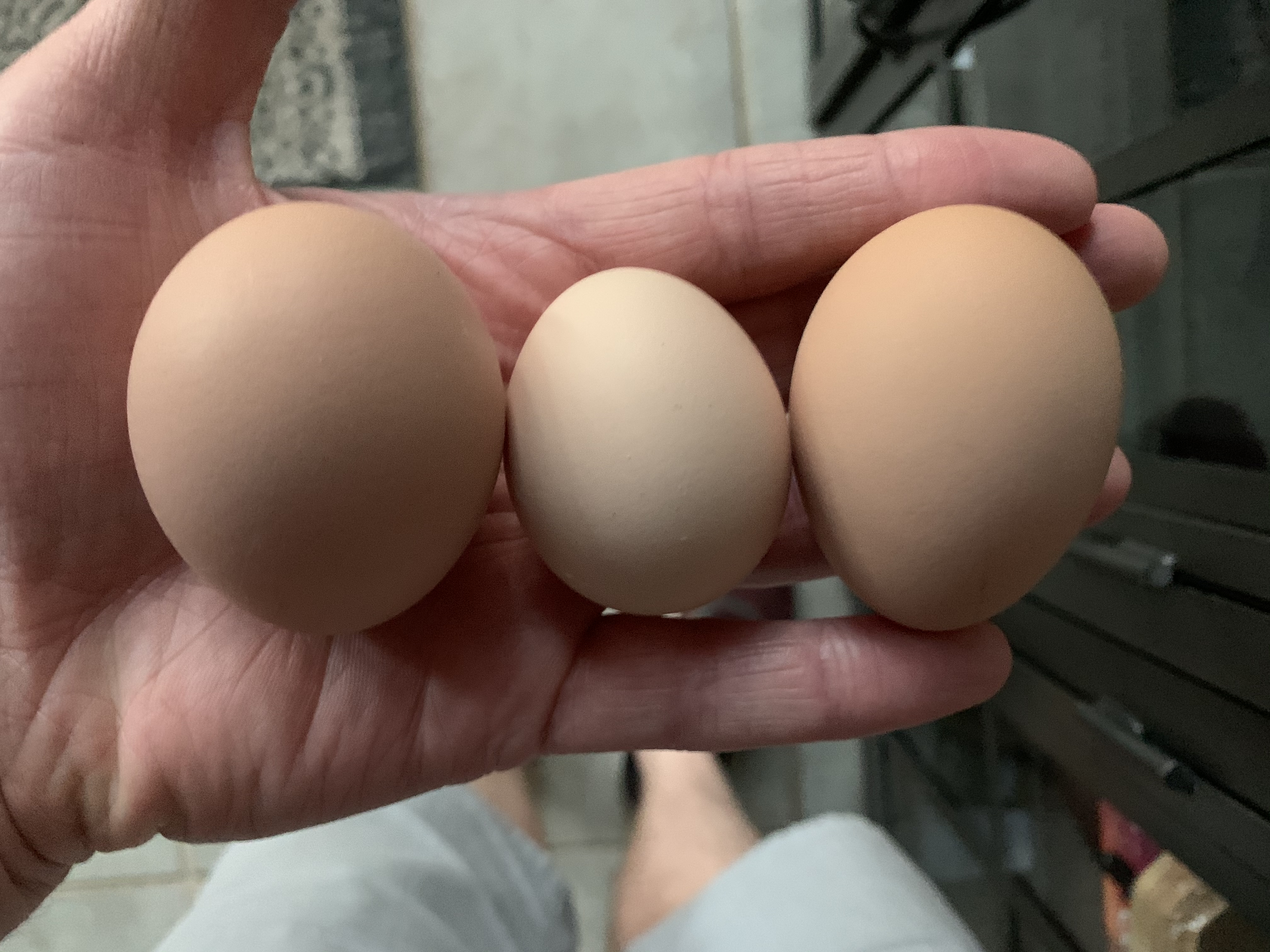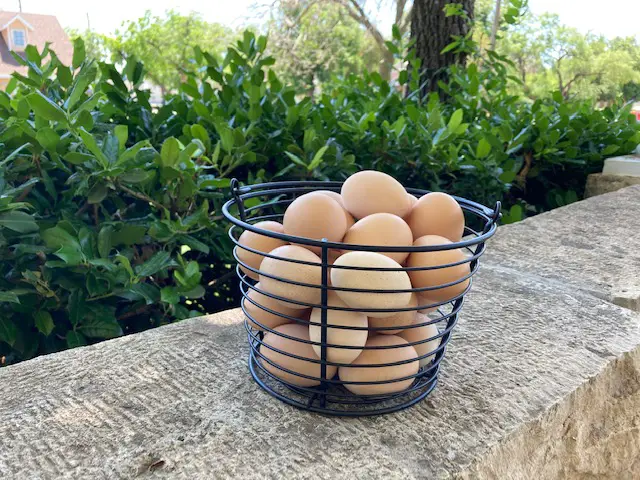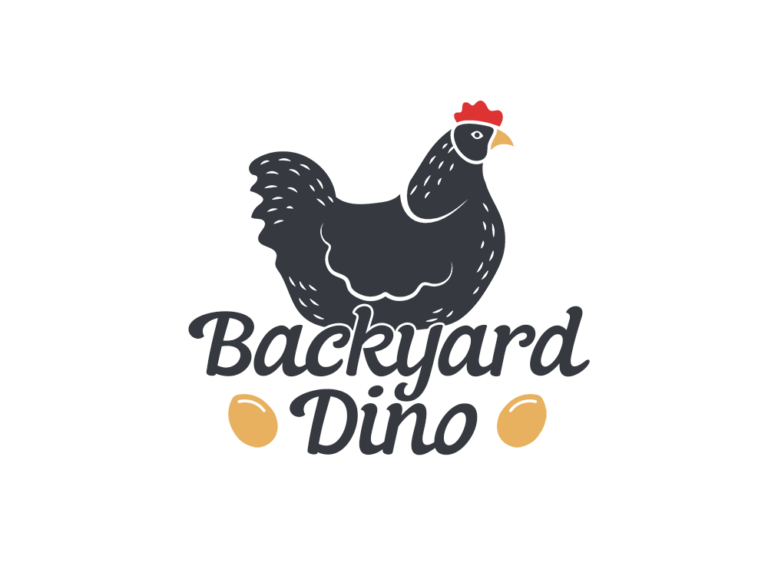A fairly common question that my non-chicken-keeper friends ask me is, “how many eggs do your chickens lay in a day?”
A chicken ovulates once every 25 hours, resulting in laying one egg no more than once a day. Every few days a hen will have a non-egg laying cycle if she was due to ovulate late in the day. Since ovulation is triggered by sunlight, chickens will slow down or pause laying eggs during the winter.
Keep reading to find out more about a chicken’s egg laying cycle and what it means to find a double yolker.
25 Hours to Lay an Egg
A chicken is born with tens of thousands of ova, or potential eggs, when she is born. As soon as the chicken hatches from her egg, no new ova or yolks will be produced; whatever number of ova she has at that point is the most she will ever have.
This does not mean that it’s possible for a chicken to lay tens of thousands of eggs. Most of these undeveloped yolks will never develop to the point of ovulation.
All of a chicken’s yolks are stored in her left ovary as the right ovary is not functional. A possible reason for this is a way to safeguard a chicken from producing two eggs at a time by only having one developed ovary.
A yolk is released into the oviduct about an hour after the previous egg was laid. If a rooster inseminated a hen in the 3 to 4 weeks prior to ovulation, the yolk can become fertilized. If no sperm is present, the yolk will continue its journey through the oviduct, which takes about 15 minutes.
Chickens don’t need a rooster to lay eggs. The eggs you buy from the grocery store or the farmer’s market are most likely eggs that are sterile, or not fertilized. For a chicken to lay an egg that will hatch into a chick, a rooster is needed to fertilize the egg in the 3 to 4 weeks before the chicken lays the egg.
The yolk then travels to the magnum where the egg white is added. This process takes about 3 hours.
Next, the developing egg will travel to the isthmus to have 2 membranes applied, which takes between 60 to 90 minutes.
The egg is now ready to have to have the shell applied in the uterus and pigment, or coloring, added. The egg will stay in the uterus for about 20 hours.
When the egg has finished this cycle, it will be carried to the va-gina where the egg has the bloom, or cuticle applied. The bloom protects the egg from bacteria once it is laid. The egg will be rotated 180 degrees and then passed into the cloaca.
From the cloaca, the egg is laid and the process starts over again.
Since this whole process takes about 25 hours, a chicken will lay an egg about an hour later each day than the day before.
Sunlight is required to trigger ovulation. When a hen lays an egg, ovulation of the next yolk happens about an hour later. If a hen lays an egg late in the afternoon, she will skip ovulation that day and will resume the following day.
How the Seasons Impact Number of Eggs
Chickens require at least 14 hours of daylight per day to lay eggs. Daylight enters a chicken’s photosensitive gland in her eye that triggers ovulation. If this trigger does not happen, then a chicken will not ovulate and will not be able to lay an egg.
Some chicken farmers will provide artificial light for their hens during the winter months to help the chickens to continue to lay eggs through the winter.
Fertility in chickens decreases in the heat of the summer. The optimal temperature for chickens is between 70 to 75 degrees F, and any extreme variations outside of this range can lead to decreased fertility. Roosters can have a reduction in sperm production and hens will lay fewer eggs when there are very high temperatures.
For these reasons, the natural time of year for chickens to lay eggs that hatch is in the spring.
Double Yolk – Chicken “Twins”
Sometimes you will find an egg has two yolks, or a double yolk. These eggs are typically much longer than regular eggs and you can guess they have a double yolk before cracking them open.
If the double yolked egg happens to be fertilized, it is entirely possible for the chicken to hatch "twins." In the same way, an egg with three yolks could possibly result in "triplets." This is unlikely, however, since there is limited space and nutrients in the eggs to support more than one developing chick.
A double yolk occurs when a yolk is released a short time after another yolk has already been released or if the first yolk is moving too slowly through the process. The two yolks will be encased in one shell.
Double yolks are considered an egg abnormality, which usually occurs in pullets that are just starting to lay eggs. Laying double yolks can also be an inherited trait found among some heavier breeds of chickens. I see double yolks occasionally with my full-grown Barred Plymouth Rocks, although it is pretty rare.





4 comments
[…] one at a time until they are fully developed and ready be released into the oviduct. This post has a section devoted to explaining the process of a yolk being released and how it becomes an […]
[…] production in chickens can decrease during the heat of the summer. Chickens take 25 hours to lay an egg. If their bodies are stressed during the time they are due to ovulate their next egg, they can skip […]
[…] out How Many Eggs Can a Chicken Lay in One Day to learn more about the egg laying cycle and how it’s impacted by […]
[…] Chickens require sunlight to trigger their hormones to start the egg laying cycle. This is why chickens will slow down or stop laying eggs altogether during the winter months. For more information on egg laying cycles, read How Many Eggs Can a Chicken Lay in One Day. […]
Comments are closed.